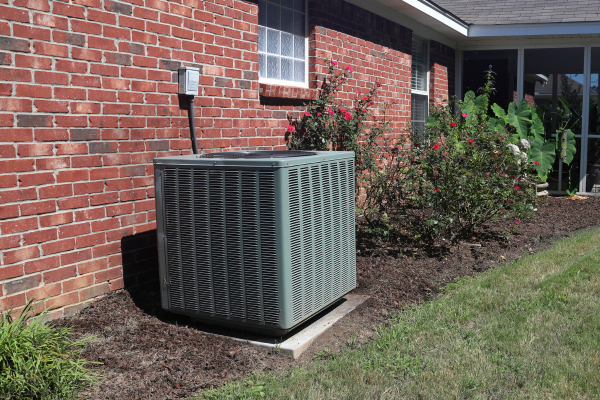If you’re constantly feeling sniffly or like your sinuses are giving you a middle finger, but can’t figure out why, your problem might be circulating through your vents. Mold isn’t just hanging out in your basement like an unwanted houseguest. Sometimes it skips the obvious places and sets up shop right inside your HVAC system—yep, the very equipment responsible for pushing “fresh air” through your home. Let’s rip open the return vent and take a hard look at what’s going on inside these systems so you can stop breathing in garbage your lungs didn’t sign up for.
Why HVAC Systems Are Mold Playgrounds
Your HVAC system was designed to make your life easier—not become a biological science experiment. But when you’ve got dark, damp spaces with regular airflow, you’ve essentially created an Airbnb for mold. Think about it. Condensation builds up in the AC coils, moisture loves sneaking into ductwork, and dust or organic debris settles in areas you can’t even reach with a feather duster. That debris becomes a buffet for mold spores. It’s cozy, it’s moist, and there’s constant traffic. That system becomes ground zero for hidden mold dangers faster than you’d think.
Combine a dash of humidity with poor maintenance, and boom—welcome to Mold-palooza. Your fancy HVAC system just got punked. What’s worse? Every time it kicks on, it sends a microscopic funk parade through every room in your house. If that doesn’t make your skin crawl, you’re probably already used to exposure without realizing it.
How Mold Winds Up in HVAC Systems
Mold doesn’t need a first-class ticket to get into your HVAC system. All it takes is some airborne spores (which exist literally everywhere), a sneaky leak, or condensation that never had a chance to dry out. Your air handler and evaporator coil are usually the biggest offenders since they cool air and basically whip up the ideal muggy paradise where spores love to party.
Once inside, the spores hitch rides on dust and moisture. If your condensate drain line is clogged or you’ve skipped changing that air filter for six months, you’ve laid the red carpet. It will latch onto the moistest spot and start reproducing like a rabbit on an energy drink. What most people miss is that mold in HVAC components multiplies fast and quietly. It doesn’t need to be visible to wreck your airflow or sabotage your lungs, which is what makes it so damn annoying.
The Moldy Health Fallout
If your sinuses are constantly flaring up or you’re coughing like you’ve been chain-smoking in your sleep, your HVAC might be dragging mold spores into your lungs. It’s not just a nose-itching nuisance either. Mold exposure sucks for everyone but becomes especially offensive for kids, elderly folks, and anyone with respiratory issues like asthma or chronic bronchitis.
Mycotoxins produced by certain types of mold are the real monsters here. These microscopic chemical weapons can trigger allergy symptoms, headaches, fatigue, and even skin irritation. Living with airborne spores is like being slowly roasted in a fog of invisible garbage gas that makes you miserable but takes you forever to pinpoint. Trust me, I’ve seen poor air qualities drive people half insane before they realized it wasn’t the drywall—it was their ducts.
HVAC Mold Prevention Done Right
Planning to wait until your house smells like swampy gym socks before acting? Bad move. Mold in HVAC systems is sneaky, but prevention doesn’t have to be rocket science. It’s about starving the spores. They need moisture and organic material to grow. So don’t give it to them. Basic steps like regularly replacing your air filters, cleaning vents, and having your ductwork inspected yearly do wonders.
Installing a dehumidifier, fixing leaks immediately, and making sure your condensate drain is actually draining (what a concept) are even better. UV lights inside your air handler also work like a mold-hit squad, breaking down spores before they spread. Have your HVAC system inspected each season—because let’s be honest, most folks don’t even touch their thermostat unless they’re freezing or sweltering.
How HVAC Mold Goes Undetected
Mold plays hide and seek like a damn champion. When it’s tucked behind those sealed panels or floating freely in duct streams, it’s invisible to your everyday walk-through. You don’t see it, so you assume it’s not there. That’s where it wins. It’s building colonies in the dark corners of your vents while you’re out here blaming DIY insulation or blaming it on your golden retriever.
Your system might look clean from the outside, but the inside could be harboring thick, black mold growths that quietly blow particles into every square foot of your home. Air filters catch some—if you’re lucky—but not all. Especially if they’re past their expiration date or lower quality models that suck more air than contaminants. And let’s not tiptoe around the obvious: if your AC smells like dirty socks or mildew, yeah—it’s probably not your imagination.
Signs You’ve Got a Mold Problem in Your HVAC
Half the battle is waking up and realizing your air might be a literal health hazard. So what do you need to look out for? First off, smell. Your HVAC shouldn’t stink unless someone dropped mozzarella in the ductwork three years ago. Second, if you turn on your unit and get hit with a wave of musty funk? That’s mold whispering, “Hey, we’ve been here a while.”
Watch for recurring respiratory issues or allergies that seem to get worse the longer you’re in the house. Real dead giveaway? Symptoms that go away when you’re not home. It’s like your living space is gaslighting your respiratory system. If your vents or air registers have visible mold, congrats, it’s already gotten bold enough to throw a parade in plain sight.
How to Get Mold Out of Your HVAC
Once mold moves in, no candle or air freshener in the world is going to evict it. You need to bring in serious cleaning reinforcements. That means opening up your HVAC system, scrubbing ductwork, vents, coils, and drip pans with a disinfecting solution, and ideally using HEPA-filtered vacuums to prevent spores from getting knocked loose and reinfecting other parts of your home.
Spores are persistent. If you skimp on cleaning or think that spraying some bleach in an air vent is going to solve the problem, you’re basically giving it a shower and telling it to hydrate and keep colonizing. Real remediation means professional-grade tools, proper containment, and methods that don’t leave your home smelling like a lab experiment gone wrong afterward.
DIY Mold Fixes That Don’t Cut It
No, bleach is not the fix-all solution. It might kill some mold on non-porous surfaces, but inside an HVAC system? Most components aren’t just metal—you’ve got insulation, ducts, and rubber seals that act like sponge condos for mold. Spraying bleach on it is like tickling the problem. Mold will take the insult and get back to making spores.
The same goes for those fogging sprays and classic “air duct cleaning” scams you’ll see advertised on late-night television. If someone shows up promising to totally clean your system for crazy cheap without even inspecting it first, congrats. You’re about to waste money on a glorified vacuum job that doesn’t get rid of real colonization. HVAC mold removal requires detail-oriented work and proper follow-through, not shortcuts and magic sprays.
Why Professional Inspection Actually Matters
You want to catch mold long before it decides to throw a black-spore house party. A professional inspection looks for things like hidden moisture accumulation, blocked air returns, and coil sludge buildup—all things homeowners miss regularly. Testing is especially useful if you feel off every time you’re inside or if you’ve had recent water damage, even if you think you cleaned it up.
During mold inspections, professionals use specialized cameras and testing tools to check for moisture and air readings you can’t get with just your eyes and a flashlight. Someone trained in HVAC mold prevention knows what warning signs to look for and where. You either pay for peace of mind now or pay double later when mold turns your holiday get-together into a sneezing and wheezing convention.
Don’t Let Mold Ride the Airwaves
Your HVAC system was meant to deliver comfort. Mold hijacks that mission and turns it into a biohazard delivery system. If you’ve got funk in your ducts and mystery symptoms that won’t quit, ignoring them is like inviting mold to hang out permanently. You could have the cleanest floors on the block and still be breathing in garbage air because the threat is inside your system.
Inspect, clean, and keep your air dry. That means pulling the hood off more often and asking tough questions about what your system is actually circulating. Don’t assume it’s fine just because the fan still runs. Mold doesn’t ring the doorbell. It slips in through condensation and waits quietly until you’re sick and searching WebMD like your life depends on it.
Take it from someone who’s seen living rooms turn into living petri dishes: Mold runs the show unless you break the cycle. Start by targeting the air that touches every corner of your home and treat your HVAC system like it matters—because if you don’t, mold will.

